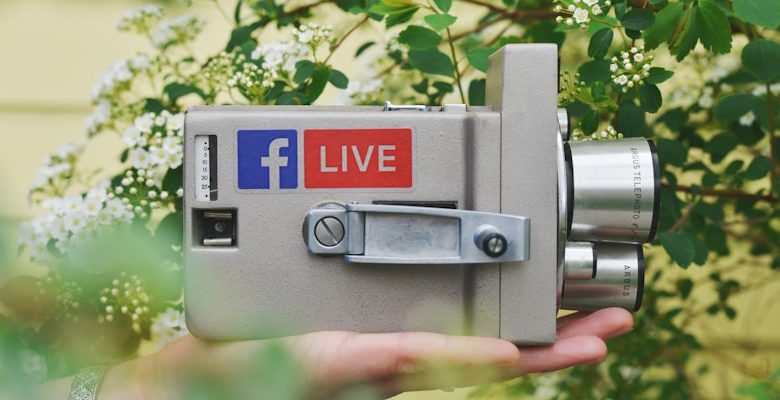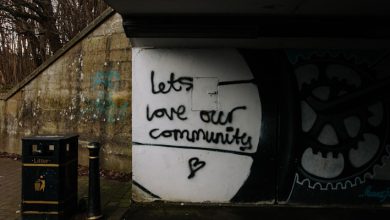The Future of Communication: NFTs and Social Media Integration

- Understanding NFTs and their impact on communication
- The rise of NFTs in the digital era
- Exploring the potential of NFTs in social media
- Integrating NFTs into the future of communication
- Challenges and opportunities of NFTs in social media
- Innovative ways NFTs are reshaping communication
Understanding NFTs and their impact on communication
NFTs, or Non-Fungible Tokens, have been making waves in the world of communication and social media. These unique digital assets have the potential to revolutionize the way we interact online. NFTs are essentially digital certificates of ownership that are stored on a blockchain, making them secure and tamper-proof.
One of the key impacts of NFTs on communication is their ability to enhance authenticity and trust. By attaching an NFT to a piece of content, such as a tweet or an image, creators can prove that they are the original owner. This can help combat issues like plagiarism and misinformation, as well as provide a way for creators to monetize their work.
Furthermore, NFTs can also be used to create unique experiences for followers and fans. For example, a musician could sell an NFT that grants the owner exclusive access to a concert or meet-and-greet. This not only provides a new revenue stream for creators but also strengthens the bond between them and their audience.
The rise of NFTs in the digital era
In recent years, there has been a significant rise in the popularity of Non-Fungible Tokens (NFTs) within the digital landscape. NFTs are unique digital assets that represent ownership of a particular item or piece of content, such as artwork, music, or even tweets. This innovation has opened up new possibilities for creators to monetize their work and for collectors to own exclusive digital items.
The integration of NFTs into social media platforms has further accelerated their growth and adoption. Artists and content creators can now easily mint and sell their work as NFTs directly to their audience, cutting out the need for intermediaries. This direct connection between creators and consumers has revolutionized the way digital content is distributed and consumed.
NFTs have also created new opportunities for social media influencers to engage with their followers. By tokenizing exclusive content or experiences, influencers can offer unique rewards to their most dedicated fans. This not only strengthens the bond between creators and their audience but also provides a new revenue stream for influencers beyond traditional sponsorship deals.
As NFTs continue to gain traction in the digital era, it is clear that they are here to stay. The decentralized nature of blockchain technology ensures the authenticity and scarcity of these digital assets, making them highly sought after by collectors and enthusiasts. The future of communication is evolving with the integration of NFTs, offering new ways for creators to connect with their audience and monetize their work in the ever-changing digital landscape.
Exploring the potential of NFTs in social media
Exploring the potential of Non-Fungible Tokens (NFTs) in social media opens up new opportunities for creators and users alike. NFTs have gained popularity in the art world for their ability to authenticate digital assets using blockchain technology. By integrating NFTs into social media platforms, users can buy, sell, and trade unique digital content like artwork, music, videos, and more.
One of the key advantages of using NFTs in social media is the ability to establish ownership and authenticity of digital assets. This can help creators protect their work from unauthorized use and ensure that they receive proper recognition and compensation for their creations. Additionally, NFTs can create new revenue streams for creators through the sale of limited edition digital collectibles.
Furthermore, the use of NFTs in social media can enhance user engagement and interaction. By offering exclusive content as NFTs, creators can incentivize their followers to actively participate in their online communities. This can lead to a more loyal and dedicated fan base, as users are motivated to support their favorite creators by purchasing and owning unique digital assets.
In conclusion, the integration of NFTs in social media has the potential to revolutionize the way creators share and monetize their digital content. By leveraging blockchain technology to authenticate and tokenize digital assets, social media platforms can empower creators to connect with their audiences in new and innovative ways. As the NFT market continues to grow, we can expect to see more opportunities for creators to explore the full potential of this technology in the realm of social media.
Integrating NFTs into the future of communication
NFTs have the potential to revolutionize the way we communicate in the future. By integrating non-fungible tokens into social media platforms, we can create unique and valuable digital assets that can be used to enhance our online interactions. These NFTs can represent anything from artwork to collectibles to virtual real estate, allowing users to express themselves in new and creative ways.
Imagine a world where instead of simply liking a post or sharing a tweet, you could send someone an NFT as a token of appreciation. These digital tokens could hold sentimental value and become a new form of digital currency within social networks. Additionally, NFTs could be used to verify the authenticity of digital content, helping to combat issues like fake news and misinformation.
As NFTs continue to gain popularity and mainstream adoption, we can expect to see more social media platforms integrating these digital assets into their communication systems. This integration has the potential to redefine the way we interact online, making our conversations more meaningful, engaging, and secure.
Challenges and opportunities of NFTs in social media
NFTs in social media present both challenges and opportunities for users and businesses alike. One of the main challenges is the lack of understanding and awareness among the general public about what NFTs are and how they work. This can lead to skepticism and reluctance to participate in this new form of digital asset ownership. However, this also presents an opportunity for education and outreach to inform people about the benefits and possibilities of NFTs.
Another challenge is the potential for scams and fraud within the NFT space, as the decentralized nature of blockchain technology can make it difficult to verify the authenticity of digital assets. This highlights the importance of due diligence and research before buying or selling NFTs on social media platforms. On the flip side, this challenge also opens up opportunities for platforms to implement verification measures and security protocols to protect users from fraudulent activities.
Integration of NFTs into social media platforms can also pose challenges in terms of scalability and user experience. As NFTs gain popularity, there may be issues with network congestion and high transaction fees, which can hinder the seamless integration of NFTs into social media interactions. However, this also presents an opportunity for developers and tech companies to innovate and find solutions to optimize the user experience and make NFT transactions more efficient and cost-effective.
In conclusion, the challenges and opportunities of NFTs in social media are intertwined and require careful consideration and strategic planning to navigate successfully. By addressing issues such as awareness, security, scalability, and user experience, NFTs can revolutionize the way we communicate and interact on social media platforms, opening up new possibilities for digital ownership and engagement.
Innovative ways NFTs are reshaping communication
One of the most exciting developments in the realm of communication is the integration of Non-Fungible Tokens (NFTs) with social media platforms. NFTs are digital assets that represent ownership of unique items or pieces of content, and they are revolutionizing the way we interact online. These blockchain-based tokens are reshaping communication by providing innovative ways for users to engage with each other and with brands.
One way in which NFTs are transforming communication is through the creation of digital collectibles. These unique tokens can be used to represent a wide range of items, from artwork to virtual real estate. By owning an NFT, individuals can demonstrate their support for a particular artist or brand, and they can also connect with like-minded individuals who share their interests. This form of digital ownership is creating new opportunities for social interaction and collaboration.
Another innovative use of NFTs in communication is the creation of tokenized experiences. Brands and content creators are leveraging NFTs to offer exclusive access to events, products, and services. By purchasing an NFT, individuals can gain entry to virtual meet-and-greets, limited-edition merchandise drops, and other unique experiences. This new form of engagement is fostering a sense of community among users, as they come together to participate in these shared experiences.
In addition to digital collectibles and tokenized experiences, NFTs are also being used to enhance the authenticity and transparency of communication. By minting NFTs of original content, creators can prove the ownership and provenance of their work, reducing the risk of plagiarism and fraud. This added layer of security is building trust among users and reinforcing the value of genuine interactions in the digital space.
Overall, the integration of NFTs with social media is opening up a world of possibilities for communication. These innovative tokens are reshaping the way we connect with others online, offering new ways to express ourselves, support our favorite creators, and engage in unique experiences. As more brands and individuals adopt NFTs as part of their communication strategies, we can expect to see even more exciting developments in the future.



